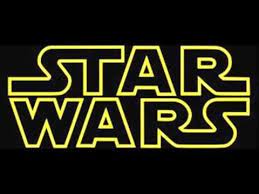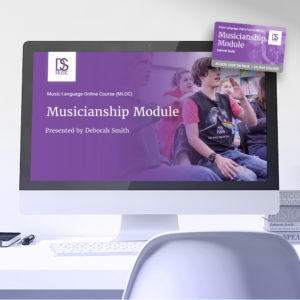3 FREE activities for mapping melodic contours in your music classroom.
Comments Off on 3 FREE activities for mapping melodic contours in your music classroom.
Ever wondered why the Star Wars main theme makes you feel ready to run off and join the Rebel Alliance and take on the entire Empire? Sure, that fanfare has some pretty epic blasting brass which has something to do with it, but there’s another reason. The answer? Melodic contour.
Not sure what that is? Essentially, it’s the shape and direction pitches in music take to form a melody. These contour patterns can rise up, descend down, or continue at the same pitch. So, in the case of this Star Wars theme, the contour (shape) rises and falls but is constantly searching upwards. Aspiring to greater heights and power, if you will. In this way, melodic contour is a very powerful tool in creating a certain character in music.

Let’s leave the sci-fi references there for now and talk through some simple ways to slot this into your classroom.
Melodic contour impacts the way music can make us feel, certainly, but we can also look at what it means structurally for melody, and as a form of graphic notation.
The activity suggestions that follow have been organised by Level 1-3, as with the DSMusic Musicianship & Aural Training series, but they’re adaptable for the needs of your spaces and students.
Example Class Activity for LEVEL 1:
Aleatoric composition using graphic notation.
In this activity, the focus is on learning that there are other, less common ways to notate music than using a traditional Western staff and that all music does not have to involve traditional musical instruments.
- In groups students come up with six sounds. These are the “notes” they can make using only what they have in their surroundings. Examples include: body percussion such as clicking or stamping, vocalising such as siren noises or fake sneezes, sounds using equipment in the room (musical or otherwise).


2. For each sound they come up with a graphic representation. An example of this is that for the siren you could draw a picture (see top left).
3. Using a grid or table (see bottom left) with an agreed number of “notes” they compose their piece by putting a symbol representing the sound in each box. Any empty boxes are rests or silences.
The class could then perform each and record their performances.
Example Class Activity for LEVEL 2:
Understanding graphic notation.
In this activity, the focus is on building an understanding of how graphic notation is used to demonstrate melodic contour.
1. Students watch videos that feature a graphic representation of melodic contour. Here are a few suggestions:
2. Students discuss, in groups, the way graphic notation for pitch matches what they are hearing. They then workshop their own graphic notation to show pitch, including high/low or long/short.
For this activity, students should be encouraged to select their own pieces of music to listen to and map with graphic notation, using a similar grid or table as used in the Level 1 example.
For more activities of this kind, some great activities can be found here in the relevant section of the NSW curriculum.
Example Class Activity for LEVEL 3:
Aural identification of melodic contour using graphic notation on the staff.
In this activity, the focus is on using an altered staff form of graphic notation to indicate melodic contour heard aurally, as it is closely related to the traditional Western 5-line stave.
- Students listen to a melody played aurally (audio for this example here) and use graphic notation on a blank staff to indicate melodic contour.
- As a class, they discuss whether the contour ascends (goes up), descends (goes down) or repeats (does not move). They can listen again and ensure what they have noted fits with what they are hearing.
- Together, the class reviews the melody they’ve heard as it would appear using traditional notation (below left), checking whether the contour matches what they have written using graphic notation (below right).


A possible extension for this activity is putting students into pairs and having them flip these steps. Essentially, have them compose a simple melody on the traditional staff, then transfer this a one line staff melodic contour representation. Then, they perform their melody for another pair of students, who notate it on the single staff, checking to see how closely it matches.
Using melodic contour to map the structure of a melody.
The activities above show ways to use melodic contouring for listening and creative exercises. Another way to address this concept in your classes is when examining melody more broadly. Understanding that the contour is a pattern that forms the basic structure of a recognisable melody, allows us to expand that notion further.
Take our opening recognisable melody—this could be taken in it’s melodic contour form and transposed into a different key while still retaining that famous lightsaber-weilding heroism.
This is a little bit like the way DSMusic uses tonic (or moveable do Solfa) when teaching, learning and really knowing scale patterns and tackling tonality. Its just that in this case, in place of the melodic contour graphic notation, we use physical handsigns to represent pitch movements.
How can DSMusic resources support you?
You can find much more about melody throughout all DSMusic resources, particularly in the Musicianship & Aural Training Series Level 1-3 and the Music Language Online Course. MLOCM gives you a bunch of ready-made melodic patterns to use!
If you set contour as your starting point, you can then expand this to consider melodies in different tonalities, as well as composition and creative tasks.
While you’re keen on checking out contour, here’s a few places to start:
And remember…
Whether you’re listening, identifying or using it a means to create, there are a variety of ways we can focus on melodic contour in our teaching and learning spaces. Melodic contour is your way to take some first steps into a much larger melodic world.
Happy melodic-contouring! – Deb



Comments are closed